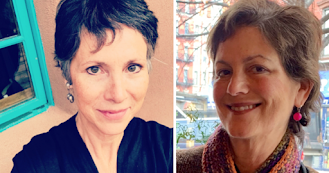Ulrike Arnold: Cosmovisions
at
Yucca Valley Visual and Performing Arts Center
May 4 - July 28, 2019
Ulrike Arnold from Düsseldorf, Germany has created paintings made from soils, mud and clay, from all five continents over more than thirty years. This series from 2017 is the first time she has made paintings with soils from the Yucatán. Arnold feels it was a way for her to discover the genuine colors of the peninsular region, and what it means to put oneself in a deep relation with the Earth, a region that the Mayas’ have known and tilled for thousands of years. Arnold combines a diversity of the chromatic shades of the mud and clay, as well as meteorite dust, a material that has traveled millions of miles through space, to create her pictures that are the place.
Approximately 65 million years ago a gigantic sidereal rock with a diameter of 10 kilometers, consisting of minerals and metals, was passing through space at an incredible speed. This meteorite called Chicxulub hit the earth near Merida, Mexico, presently known as the Yucatán. The meteorite left a crater with a diameter of 200 kilometers and reduced everything that came in its way to rubble and ashes. What once was a vast place full of life now became a wasteland of destruction. The air was full of harmful gases and contaminating space debris. Giant sea waves devastated the coasts, and millions hectares of forest were lost. These extreme phenomena ultimately erased 75 percent of the flora and fauna of that time.
The word “COSMOVISIONS,” means a VIEW OF THE WORLD that a person or a society displays in order to interpret the place where it resides—to make the place accessible or to become familiar with it—anchored in a specific time and at a certain place. The word can also be traced back to the German expression “WELTANSCHAUUNG,” which refers to a range of perceptions, ideas and concepts that a human being has with respect to the world’s existence, reality or constitution.
Curated by Patricia Watts
From left to right: Monica Lynne Mahoney, Patricia Watts, and Kate Temple.
















